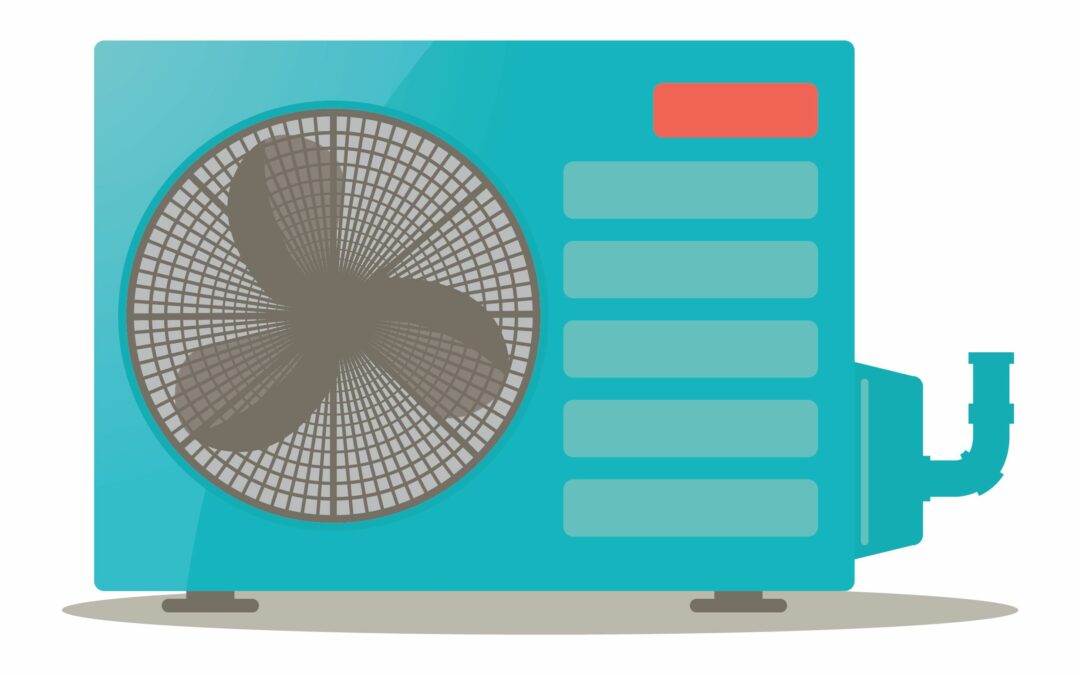We all know what an air conditioner is. It’s that unit that somehow blows cool air into our homes to give us blessed relief on a sizzling hot day.
An air conditioner may not be as complex as the Space Shuttle or the CERN Large Hadron Supercollider, but an AC unit is made up of a number of different parts that must all function together efficiently and cooperatively to cool your home effectively.
A primary component of an air conditioner is the condenser, most often called an AC condenser. (Note that heat pumps have condensers also.) Knowing what a condenser is and how it works can help you make more informed decisions about buying HVAC equipment for your home.
Explaining What a Condenser Is
A condenser is the portion of your AC unit that is outdoors. Its job is to collect heat or release heat, depending on whether it’s hot or cold outside. To better understand how this works, we have to break this down just a bit more, so please bear with us and follow closely.
In an air conditioning unit, heat is absorbed by a type of gas or vapor called a refrigerant. Many people have heard of Freon gas and how this substance is placed inside the coils of refrigerators, home AC units, or an AC unit in your car, for example.
Note that Freon gas is no longer in use because of the problems it created with the ozone layer — we won’t get into that now. Suffice it to say that effective and environmentally safe substitutes gases have been found to replace Freon.
Anyway …
The refrigerant gas is made cold by first putting it under enormous pressure to turn it into a liquid. This is what a compressor does. That’s another part of an air conditioner that works hand-in-hand with a condenser.
The compression process of gas is what makes it very hot and turns it into liquid. This liquid is then is allowed to expand back into a gas. When it does so, it gets very cold. This cold gas is inside metal coils. When air is blown past these coils, it cools the air very effectively — and that’s the air that flows into your home to make it cool and comfortable.
Now, a lot of people naturally get confused between the terms “compressor” and “condenser.” What is the difference?
A. The compressor is responsible for “squeezing” the gas to change it into a liquid.
B. The condenser is responsible for taking the pressurized gas from the compressor and changing it into liquid-vapor.
Three Basic Kinds of Condensers
Now that you have a breakdown of what a condenser is and what it does, let’s look at the three basic kinds or “flavors” these units come in.
1. Air-Cooled
Air-Cooled condensers are favored for cooling residential interiors and small offices. They are used in what are called “small capacity systems.” A small-capacity system is one that is smaller than 20 tons.
Important side note: In this case, “a ton”, refers to an air conditioner’s cooling capacity. HVAC engineers use tonnage to measure BTUs or “British Thermal Units.” One ton refers to the rate of heat needed to freeze one ton of water in 24 hours. That just happens to be 12,000 BTUs. Thus, a 3-ton air conditioner does not weigh three tons! What it really refers to is that it has a capacity of 36,000 BTU per hour.
So, the advantage of using an Air-Cooled condenser is that there is no need for water piping. This saves on water costs and problems that can result from mineral build-up in water. Air-Cooled units are easy to install and thus cost less. The need for maintenance is also limited.
A drawback of Air-Cooled condensers is that they require more energy for every ton of refrigeration they process. Also, on days when most cooling is required, Air-Cooled units offer the least available rate of cooling.
2. Water-Cooled
Not to make this too confusing, but it must be noted that there are three types of water-cooled condensers. They are:
- Shell and Tube
- Shell and Coil
- Double Tube
The most commonly used is the Shell and Tube configuration. They are available in a range of capacity sizes, from two tons all the way up to around 200 tons. The advantage of this design is that they use less power per ton of refrigeration handled. With the Shell and Tube condenser, the compressor will last longer than that used with an Air-Cooled unit.
3. Evaporative
This type of condenser is used to eliminate heat from a cooling system when the heat cannot be used for other purposes. Excess heat is removed by evaporating water, thus its name. Evaporative condensers have the advantage of reducing the water pumping and chemical treatment required by a cooling tower-refrigerant condenser system. They are superior to air-cooled condensers because they require less fan power to produce the same amount of cooling action.
To be crystal clear about what an evaporative condenser is — it converts refrigerant from its gas-vapor state to a cooled liquid by using the evaporation of water. The evaporated water is sprayed over the outer surface of the refrigerant tubing.
These models are most often used in light industrial settings.
Air Handlers Vs. Condensers
HVAC professionals say one of the most common questions they get is:
“What is the difference between a condenser and an air handler?”
To answer this question, the first thing you need to understand is that a condensing unit and an air handler are both basic components of what is commonly called “a split system.” That’s a heat pump for heating combined with an air conditioning system.
Split systems are common in warm-climate locations, such as Florida. Most AC units sold there are split systems.
Now let’s define what an air handler is:
It is a component that circulates air inside a home or office space. An air handler is most often placed indoors, such as in an attic or closet. The basic components of an air handler are a filter, a coil and a blower.
The blower is what forces air through the evaporator coil and sends it throughout an interior space using the ductwork. The purpose of the filter is to remove contaminants suspended in the air. The indoor coil is what maintains the air at the specified temperature.
And so, instead of blowing conditioned air throughout an interior space as does an air handler, a condenser’s primary job is to remove heat from a home or office space. Again, it accomplishes this by passing warm air through the return ducts and then past the refrigerant coils located inside the AC unit.
Replacing the Air Handler and Condenser in a Split System
Sometimes either the air handler or the condenser will fail or wear out in a split system. When that happens, HVAC technicians recommend that both be replaced at the same time even if just one of them has gone bad.
That’s because the efficiency rating of the unit is based on a matched system. Air handlers and condensers are designed to work together as matching units for maximum efficiency and peak performance.
What about an outdoor condenser? Can you replace that without also getting a new air handler? The short answer is yes. However, be warned that doing so can end up costing you more in the long run. The reason is the same — these units are designed to work in tandem by engineers.
The only way to be sure you are getting optimal performance is to replace air handlers and condensers at the same time so they remain precisely in tune with each other.
Another thing to consider is that if you opt to save money and replace only the condenser — and then the air handler fails later — you will end up paying double the installation cost anyway later.


Recent Comments